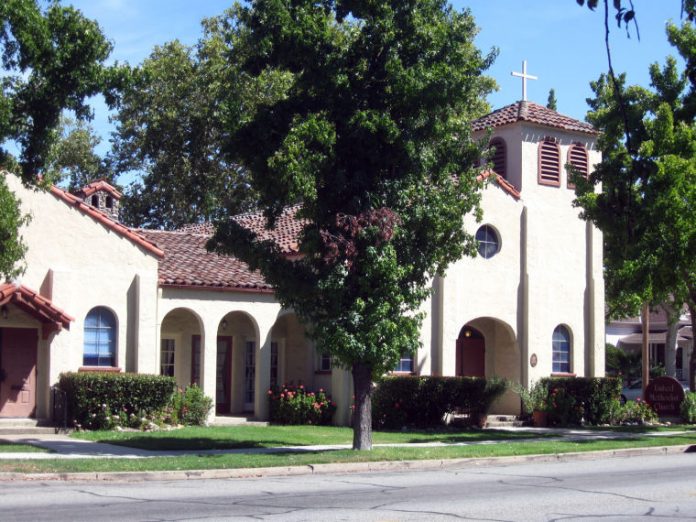
A recent newsletter of the Gilroy United Methodist Church contained an interesting article by Dispatch columnist Kat Teraji. She explained how the daughter of a former pastor (back in 1938) recently donated to the church “a wealth of artifacts and articles” from that time period.
As Kat noted, “This is a significant return of a piece of the City of Gilroy’s history too, since the original Methodist Episcopal Church, South, was the first church of any denomination ever organized in Pleasant Valley, as Gilroy was known back then.”
Churches play important roles in the lives of their communities, and South Valley has many that go back generations.
• In 1965, St. Mary Roman Catholic Church marked its centennial with the publication of an impressive book recounting its 100 years of service to South County residents. No doubt, other congregations have accomplished similar useful projects.
The following list gives other examples of local churches with long, proud histories of service.
• The Morgan Hill United Methodist Church was founded in 1893 when a donation of $50 allowed purchase of three lots on Monterey Road. For several years a building was shared by both Methodist and Baptist congregations with pastors alternating preaching duties each Sunday.
• St. Luke’s Episcopal Church in Hollister organized as a congregation in 1876; the present redwood chapel dates from 1903.
• The First Presbyterian Church in Hollister was founded in 1873; its first building was erected in 1879.
• The San Martin Presbyterian Church congregation formed in 1898; the present sanctuary dates from 1904, making it the oldest continuing place of worship in the San Jose Presbytery.
• St. John’s Episcopal Church was founded in a small chapel west of Morgan Hill in 1916, served by a priest who traveled weekly rom St. Stephen’s in Gilroy. When the congregation dwindled, the building was dismantled and carted away. In 1955, Morgan Hill got a new start: the first service in its present building was held in 1960.
• In 1973, the American Lutheran Church, a denomination no longer in existence, sent Pastor Gary Berkland as a missionary to Morgan Hill. By 1975, the congregation was worshipping in the first phase of their present building complex.
Besides moving from one building to another, sometimes congregations change names. Gilroy’s New Hope Community Church and Morgan Hill’s Crossroads Christian Center both began life in the early 20th century as “First Assembly of God.” And new churches are constantly forming, as is attested to by the groups worshipping in places like the Morgan Hill Community and Cultural Center, school auditoriums and storefronts.
Many resources exist on the Internet to help religious groups document their history for future generations. Here are some helpful websites:
• Writing a history of your local church: congregationallibrary.org
• How to write a local church history: gcah.org/resources
• Writing a local church history: A guideline for local church historians: pcahistory.org/local/writinghistory.html
• Tips for writing church history: grammar.yourdictionary.com/grammar-rules-and-tips/tips-for-writing-church-history.html
Since an important part of this work is conducting and recording oral interviews with members of the congregation, this should be an ongoing process. Too often older, founding members of the congregation are no longer available when it is decided to write the church’s history.









